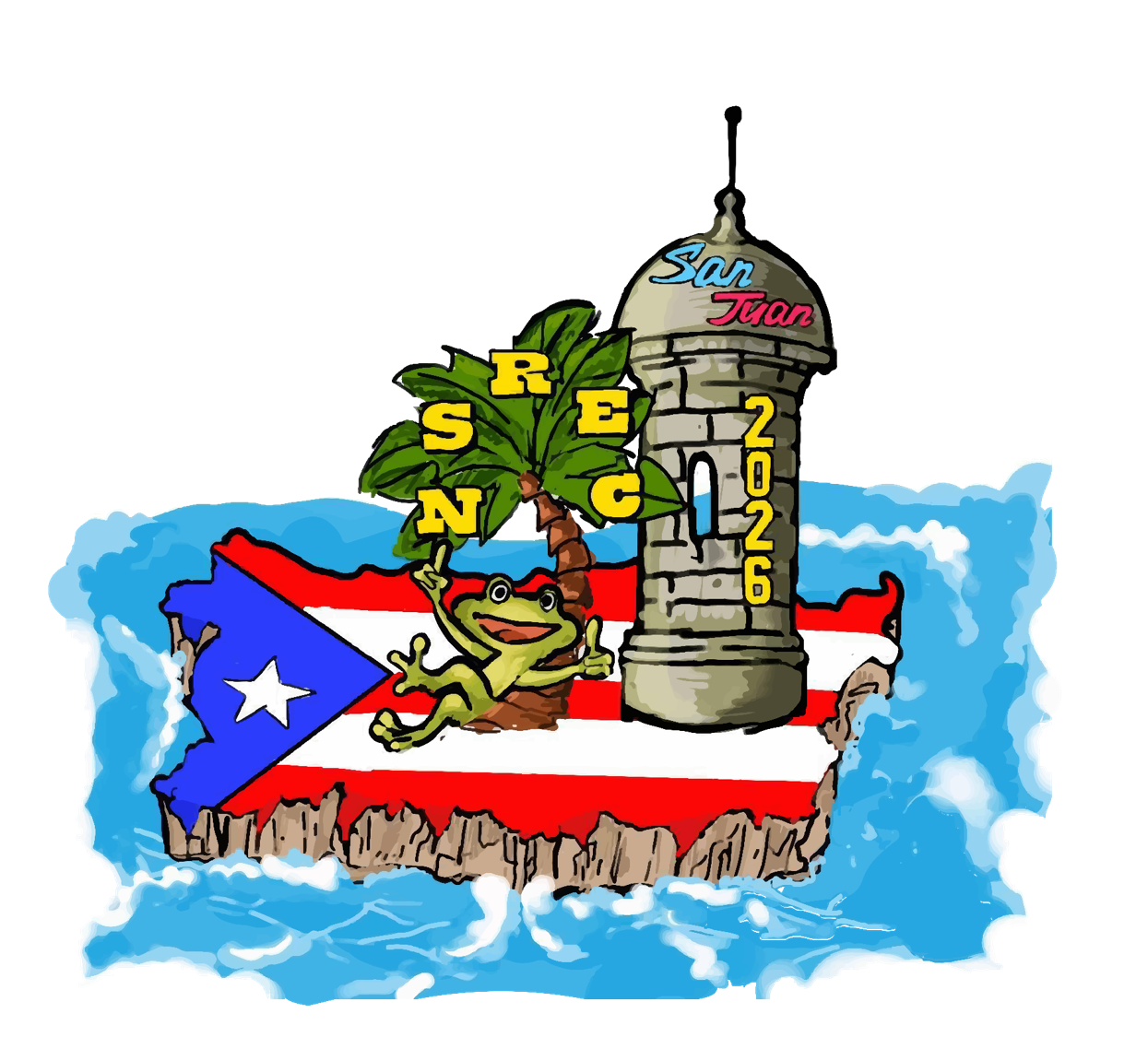2025 IEEE NSREC TECHNICAL PROGRAM
SESSION D SCHEDULE
NASHVILLE RENAISSANCE HOTEL, NASHVILLE, TN
WEDNESDAY, JULY 16, 2025
SESSION D
Grand Ballroom 2-3
RADIATION EFFECTS IN DEVICES AND INTEGRATED CIRCUITS
9:30 AM
SESSION INTRODUCTION
Chair: Aymeric Privat (onsemi)
D-1
9:35 AM
Ultra-Fast Recovery of TID-Induced Degradation in MOS Transistors via Electrical Rapid Annealing
A. Vidana1, C. Mckay1, N. Dodds1, T. Wallace1, J. D’amico1, J. Joffrion1, N. Nowlin1, P. Oldiges1, K. Sapkota1, H. Barnaby2, D. Hughart1
- Sandia National Laboratories, USA
- ASU, USA
We present a room temperature, ultra-fast electrical rapid annealing (ERA) method that achieves near-complete recovery of TID-induced degradation in at least two FinFET technologies. Work is ongoing to understand the recovery mechanism and reliability impacts.
D-2
9:50 AM
Effects of Total Ionizing Dose on Specific Emitter Identification and Authentication of Software-Defined Radios
R. Baltazar Felipe1, J. Ermi1, H. Hunnicutt2, J. Tyler2, I. Hudson1, B. Himebaugh1, D. Reising2, D. Loveless1
- Indiana University Center for Reliable and Trusted Electronics, USA
- University of Tennessee at Chattanooga, USA
Total-ionizing dose effects on specific emitter identification and authentication of wireless transmitters are investigated. Co-60 experiments reveal degradation in the ability to classify software-defined-radio transmitters post-irradiation and suggest likely failure mechanisms within the local oscillator.
10:05 AM – 10:45 AM
Broadway Ballroom
BREAK
D-3
10:45 AM
SEE and TID Resilient Vanadium Dioxide Phase Transition Material Millimeter-Wave Switches
Z. Brumbach1, D. West1, D. Sam1, J. Shin1, S. Dasari1, G. Ashley1, B. Ringel1, J. Teng2, P. Harris3, M. McCurdy3, R. Reed3, G. Allen4, N. Ghalichechian1, J. Cressler1
- Georgia Institute of Technology, USA
- The Aerospace Corporation, USA
- Vanderbilt University, USA
- JPL, USA
The effects of TID and SEE on vanadium dioxide (VO2) millimeter-wave switches were measured and analyzed. No evidence of the high-speed, low-loss VO2 switches changing states, or degrading was observed.
D-4
11:00 AM
Recovery of JunoCam by Annealing in the Jovian Radiation Environment
J. Schaffner1, M. Caplinger1, M. Ravine1, L. Lipkaman vittling1, D. Krysak1, C. Hansen2, S. Madsen3, A. Berkun3, B. Rax3, M. Johnson3, E. Sturm3, J. Delavan4, H. Yonter4, S. Bolton5
- Malin Space Science Systems, USA
- Planetary Science Institute, USA
- Jet Propulsion Laboratory, California Institute of Technology, USA
- Lockheed Martin Space, USA
- Southwest Research Institute, USA
After eight years in the Jovian radiation environment, well past its design life, JunoCam suffered a series of anomalies due to radiation dose. Annealing, by heating, has recovered the instrument and extended its useful life.
D-5
11:15 AM
Total Ionizing Dose Response of Novel n-Type Vertical Nanosheet FETs with C-Shaped-Channel
M. Chen1, Y. Huang1, Y. Wu1, F. Liu1, B. Li1
- Key Laboratory of Science and Technology on Silicon Devices, Institute of Microelectronics of the Chinese Academy of Sciences, China
The total ionizing dose response of n-type vertical C-shaped-channel nanosheet FETs (n-VCNFETs) are investigated. First experimental study reveals n-VCNFETs exhibit ≥ 500 krad(Si) radiation tolerance through self-healing or layout optimization, enabling LEO satellite applications.
2:50 PM – 4:50 PM
Germantown 1-3
POSTER SESSION
Chair: Daisuke Kobayashi (ISAS/JAXA)
2025 IEEE NSREC POSTER SESSION D
NASHVILLE RENAISSANCE HOTEL, NASHVILLE, TN
WEDNESDAY, JULY 16, 2025
2:50 PM – 4:50 PM
Germantown 1-3
PD-1 TID-Induced Degradation in 3-nm FinFET SRAM Cell Retention
N. Pieper1, J. Kronenberg1, Y. Xiong1, J. Pasternak2, D. Ball1, B. Bhuva1
- Vanderbilt University, USA
- Synopsys, Inc., USA
TID-induced degradation in SRAM cell stability is measured in a commercial 3-nm bulk FinFET node. TID-induced increases in data retention voltages for 3-nm cells are observed to be greater than that for 5-nm SRAM cells.
PD-2 Evidence for Single-Particle Displacement Damage in 14-nm FinFET SRAMs
Y. Xiong1, J. Kronenberg1, J. Xiong2, J. D’amico2, A. Vidana2, N. Pieper1, G. Vizkelethy2, N. Dodds2, N. Nowlin2, B. Bhuva1
- Vanderbilt University, USA
- Sandia National Laboratories, USA
Experiments on 14-nm FinFET SRAMs reveal that single-ion-induced displacement damage causes stuck memory bits in 1-fin bitcell designs, but not in 2-fin bitcell designs. Failure mechanisms are identified and discussed using experimental results and simulations.
PD-3 Strategic Input Selection For Deep Neural Networks Reliability Evaluation
L. Roquet1, F. Fernandes dos Santos1, M. Kastriotou2, A. Kritikakou1
- IRISA/Inria Rennes, France
- ISIS Neutron and Muon Source, United Kingdom
We present a robust methodology for selecting inputs for DNNs in radiation experiments. Using our approach, we obtained a 12.19× higher DNN misclassification rate on average compared to the commonly used random input selection.
PD-4 Degradation of Charge Transport in Irradiated FDSOI Devices at Cryogenic Temperatures
F. Mamun1, M. Spear2, J. Solano3, J. Neuendank1, M. Turowski4, H. Barnaby1, I. Esqueda1
- Arizona State University, USA
- Airforce Research Lab, USA
- MOOG Space and Defense, USA
- Alphacore Inc, USA
This work establishes the impact of radiation on the transport properties of FDSOI devices at cryogenic temperatures. A quasi-ballistic transport model reveals bias-dependent degradation in mobility attributed to charge buildup in the buried oxide.
PD-5 To Explore the Future of Quantum ICs for Space applications: A Study on Cryogenic Behavior of X-ray Irradiated 22nm FD-SOI MOSFETs
J. Zhao1, Y. Qing1, Z. Li2, M. Gorbunov2, Q. Ma1, L. Marien1, M. Zhang1, T. Maraine3, F. Saigné3, J. Prinzie1, P. Leroux1
- KU Leuven, Belgium
- IMEC, Belgium
- Université de Montpellier, France
This study explores 22-nm FD-SOI MOSFETs under X-ray irradiation at 20 K. NMOSFETs recover, but PFETs show increased Vth. A transimpedance amplifier analysis highlights radiation challenges for quantum ICs in space applications.
PD-6 Investigation of the Degradation Mechanism of LDMOS Under Electromagnetic Pulse
S. Guan1, Y. Wu2, L. Shu2, F. Liu2, H. Zhang1, X. Wei1
- Beijing University of Posts and Telecommunications, China
- Institute of Microelectronics of China Academy of Sciences, China
This work investigates Electromagnetic Pulse(EMP) damage mechanisms in LDMOS transistors for varying conditions. Neural networks and electromagnetic leakage signal have been used to achieve damage classification of LDMOS with EMP.
PD-7 Ionizing Dose Effects on DNA Data Storage Nanoplatforms
L. Sala1, K. Cardos1, V. Olšanský2, D. Chvátil2, F. Chevalier3, V. Vizcaino3, A. Méry3, J. Kočišek1
- J. Heyrovsky Institute of Physical Chemistry of the CAS, Czech Republic
- Nuclear Physics Institute of the CAS, Czech Republic
- Normandie Univ, ENSICAEN, UNICAEN, CEA, CNRS, CIMAP, France
DNA origami nanoplatforms for data storage were exposed to ionizing radiation to identify structural vulnerabilities. This analysis contributes to optimizing these nanoplatforms and advancing methods to enhance data integrity and long-term preservation.
PD-8L A Comparative Study of Single-Bit Upset Cross Sections Between Single-Photon Absorption Laser and Heavy Ion Testing
Toguchi1, N. Rezzak1, J. McCollum1
- Microchip Technology Inc., USA
This study compares SBU XS from SPA laser and heavy-ion tests for 28 nm Planar and 12 nm FinFET SRAMs, finding good agreement at high LET and underestimation at low LET.

